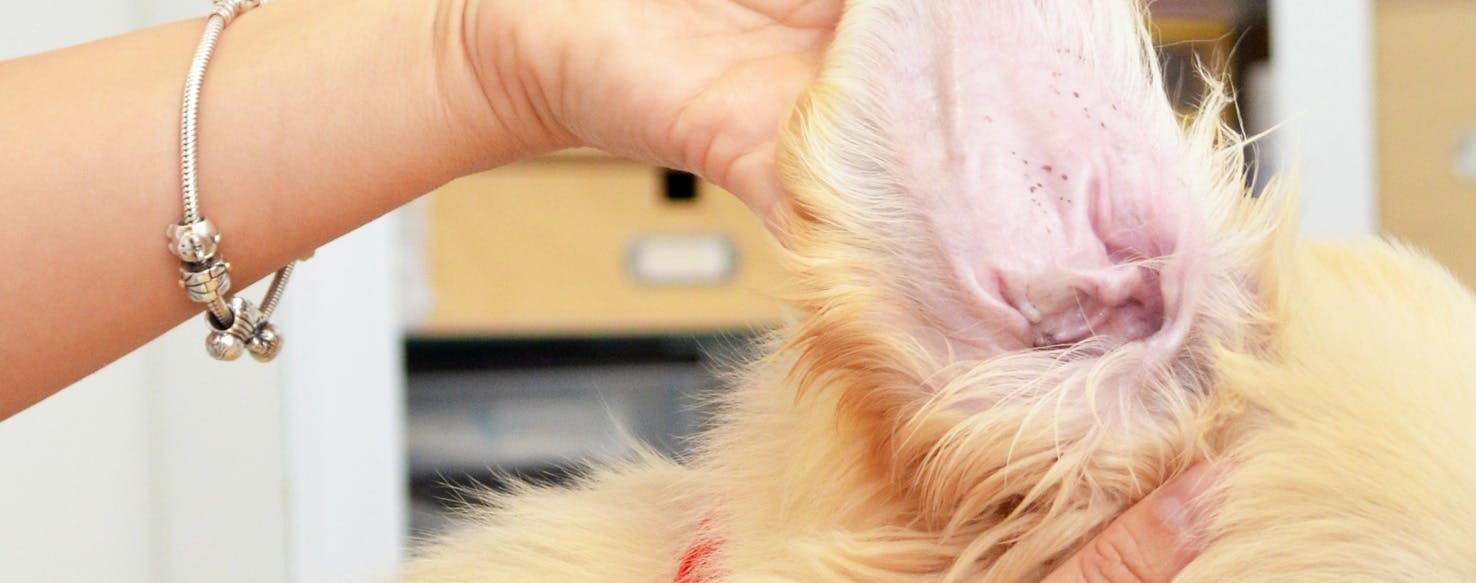Ear mites are the
worst! These highly contagious parasites can cause a ton of discomfort for our
favorite furry furiends, from minor irritations to serious conditions including
infections and burst blood vessels in the ears due to the incessant scratching.
If left untreated, ear mites can easily spread to other animals, including
those in your home. If your dog is free of the mites, they can easily catch it
from other infested animals.
Luckily, there are
ways to keep your pup healthy and safe from these spider-like creatures. While
it is fairly easy to get a treatment for ear mites, there are other strategies
to ensure that your canine bestie’s ears stay clean and free of these pests. But first, you need to know what ear
mites look like.
What Do
Ear Mites Look Like?
Ear mites, or Otodectes
cynotis, are tiny parasites that are members of the arachnid or spider
family. They are actually so small that they can barely be seen as a small
white dot with the human eye. These pests love to nest in the ear canal of dogs
and cats where they feed on skin debris. What owners do see is the characteristic
brown-black crumbly discharge in their dog’s ears that resembles coffee grounds.
This substance is made up of wax, blood, skin, and the actual ear mites, and is
a tell-tale sign that your pup is infested!
Likely though, you
will notice the other symptoms of ear mites in dogs first. Dog ears are sensitive,
and all that mite activity causes their ears to itch terribly. If infected, you’ll
notice your dog scratching at their ears and whining, and they may scratch at their neck and
head too. You may see your dog shaking their head, especially after an ear
cleaning, or you might notice a bad odor coming from the ears. There could be cuts in
or around the ears, or a raw area behind the ear from your dog scratching. In severe
cases, the buildup of material in the ear canals can block them, causing
temporary hearing loss, or the ear mites can migrate out of the ear to other parts of the body,
causing itching and abrasions in those areas.
It’s best to be sure your
dog is protected from these microscopic enemies before they have to suffer from
the mite’s insatiable appetite.
How to Prevent
Your Dog from Getting Ear Mites
Before you
know how to keep your dog safe, you need to know how your dog can catch ear
mites. The most common way is by coming into contact
with another animal who is already infected. This means that your dog can get
mites from another animal at home, or from dog park friends and pup playdates. While
direct contact with an infected animal is a surefire way to transfer the mites,
your dog can also contract the mites from contact with an area that has been
contaminated. An affected animal that shakes their head vigorously can
literally shower an area with mites that can then be picked up by a healthy dog.
If your pup visits the kennel or a doggie daycare, they can pick it up from
contaminated bedding, or even toys. The good news is that there are ways to
ensure your dog stays free of ear mites, no matter where they go.
Ear mite prevention includes a few different
strategies. First, keep your dog away from other dogs or cats until you know they
are free of ear mites, and keep them out of public dog spaces such as dog parks
and kennels.
If you know your dog has had contact with an
infected animal, be sure to check your dog for symptoms. If this is an animal that
lives in the same home, you’ll need to treat your dog for ear mites too, even
if they don’t have symptoms yet. You’ll also need to wash any bedding in hot
water and then dry in a hot dryer. Also be sure to wash any toys and surfaces that
the infected animal uses to get rid of all the mites.
Next, you should regularly check and clean
your dog’s ears with a vet approved cleaner. Not only does this help to reduce
the risk of an ear mite infestation by keeping the food that mites like to a minimum,
but it also gives you a chance to inspect your dog's ears for any signs of an
ear mite infestation that will be easier to treat if caught early.
Since we can’t always control the environments
our dogs enter, and we certainly don’t want to keep them quarantined their
whole lives, there are woofderful topical applications that can help prevent
ear mite infections. Some topical treatments that are applied behind the
shoulders once a month to prevent fleas and ticks from hitching a ride on your
pup can also keep ear mites away too. When used regularly, these products create
a shield of protection which can stop ear mites in their tracks. They do need
to be prescribed by a veterinarian, so be sure to talk to your vet about
keeping your pup safe!
Treatment
of Ear Mites
If you’ve
tried your best, but your pup still got ear mites, there are treatments to
help.
First
things first, your vet is going to run some tests to make sure your dog actually
has ear mites versus a yeast infection, which has some of the same symptoms. After
looking in the ear and examining the debris to confirm ear mites, your vet can
prescribe an ear mite treatment for your dog, such as topical monthly applications like those flea and tick preventatives, topical medications that go directly in
the ear, or even injections. If any other dogs or cats live in the same house,
they will need to be treated too. No matter what treatment is given, you will
need to clean out all the debris from your dog’s ears with a veterinarian
approved cleaner until the infection is gone. After that, create a routine to check
and clean your dog’s ears to prevent future infections.
Veterinarians
often get the question, “Can I use cat ear mite medicine on my dog?” While in
certain circumstances, a vet may prescribe a treatment used for cats, in most
cases, a different treatment needs to be given that is specially formulated for
dogs. Always check with your vet first, and never attempt to treat your dog
with cat medications on your own. If you are wondering if humans can get ear
mites from their dog, rest easy. While there have been rare cases of skin
rashes in people, infections of the ear from mites has never been reported, so
you are free to continue loving your itchy dog!


